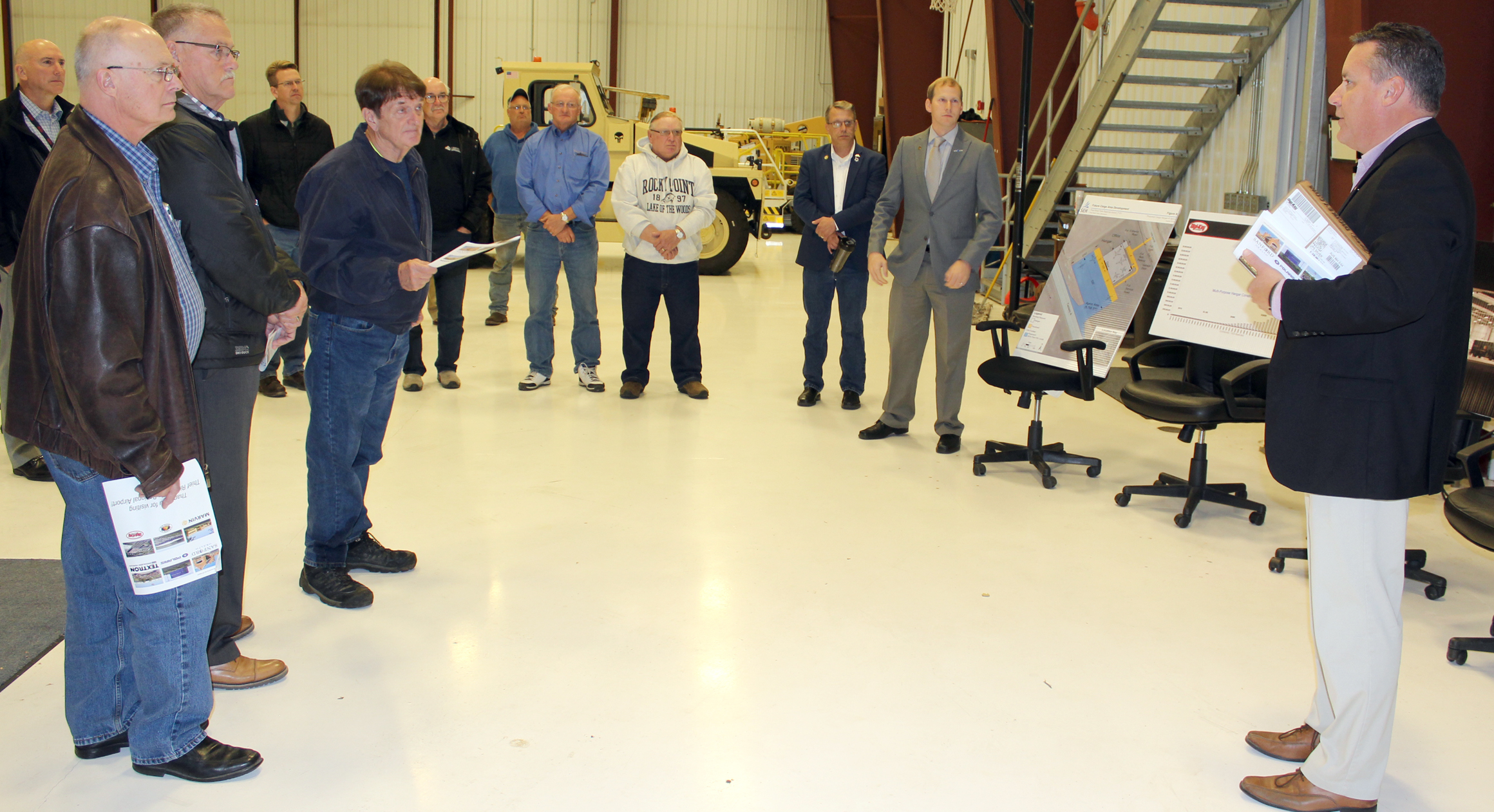
by April Scheinoha
Reporter
It was round two for the Thief River Falls Regional Airport Authority as the Minnesota Senate Capital Investment Committee toured the airport’s multipurpose hangar Wednesday, Oct. 2.
The committee toured the hangar to hear about the Airport Authority’s request for $6.75 million for a new $7.5 million cargo hangar at the airport. If approved, the request would be funded with bonding proceeds. A little less than a month earlier, their Minnesota House of Representatives counterparts heard the same request.

The request came after IFL Group recently transitioned to using CRJ-200 aircraft at the airport. IFL Group transports packages on behalf of both UPS and FedEx. It makes nine round-trip flights per week.
Those flights are usually transporting packages from Digi-Key. “We currently stock about 1.8 million parts. We take orders till 8 p.m.,” said Chris Lauer, vice president of order fulfillment at Digi-Key. He added that someone in the United States, Canada and most of Mexico may order a part by 7:50 p.m. and have it on their doorstep by the next morning. For that to happen, Digi-Key relies on IFL Group and the CRJ-200 aircraft.
However, the current multipurpose hangar can only fit one CRJ-200 at a time. “As it is, it is a problem of the door width and the depth of the hangar, so you can get one into the corner, but you just don’t have the wing space clearance off to the side,” said Airport Manager Joe Hedrick. Larger ground support equipment further complicate matters.
“In addition to just storing the aircraft, loading them inside of the temperature-controlled climate is crucial as well,” said Hedrick. He referred to the unpleasant weather conditions one may face while loading and unloading packages into an aircraft parked outside on a ramp.
The Airport Authority has come up with a solution – build a 50,000 square-foot cargo hangar south of its fuel farm. The hangar would have enough space to park three CRJ-200 aircraft. An access route would be located along Pennington County State Aid Highway 17.
The Airport Authority already has ideas about who may use the multipurpose hangar after the proposed cargo hangar is built.
“We’ve got a myriad of different users that could potentially use this hangar, including Textron with their corporate aircraft, Sanford with their charter aircraft and passengers that are requiring emergency transportation,” Hedrick said. He also referred to other potential tenants, including the Minnesota Department of Natural Resources and Boutique Air.
“During wintertime, in particular, to be able to offload or onload patients in a heated facility like this will be extremely beneficial,” said Sanford Thief River Falls Chief Executive Officer Brian Carlson. “Oftentimes, medical transport is not always about getting a patient from our location to a different location quickly.”
In those situations, Sanford transports medical professionals from its Fargo, N.D., facilities to Thief River Falls. They help stabilize the patient further here and then transport the patient. While out-of-area staff are helping tend to the patient’s needs, Sanford’s fixed-wing aircraft sits idle outside at the airport.
Now what?
The Thief River Falls proposal was among more than 30 proposals from local governments, colleges, state agencies and other entities. The proposals totalled more than $5.3 billion.
“It was an insightful tour that highlights just how vast the needs are across the state of Minnesota. Visiting these communities, meeting the passionate people involved in the projects, and seeing the projects firsthand really helps the committee make decisions on which projects we have the capacity to fund. When the legislative session begins, there will be some really tough decisions to make,” said Sen. David Senjem (R-Rochester), chairperson of the Capital Investment Committee, in a press release.
The committee is expected to formally consider the requests once the Legislature convenes in February.
